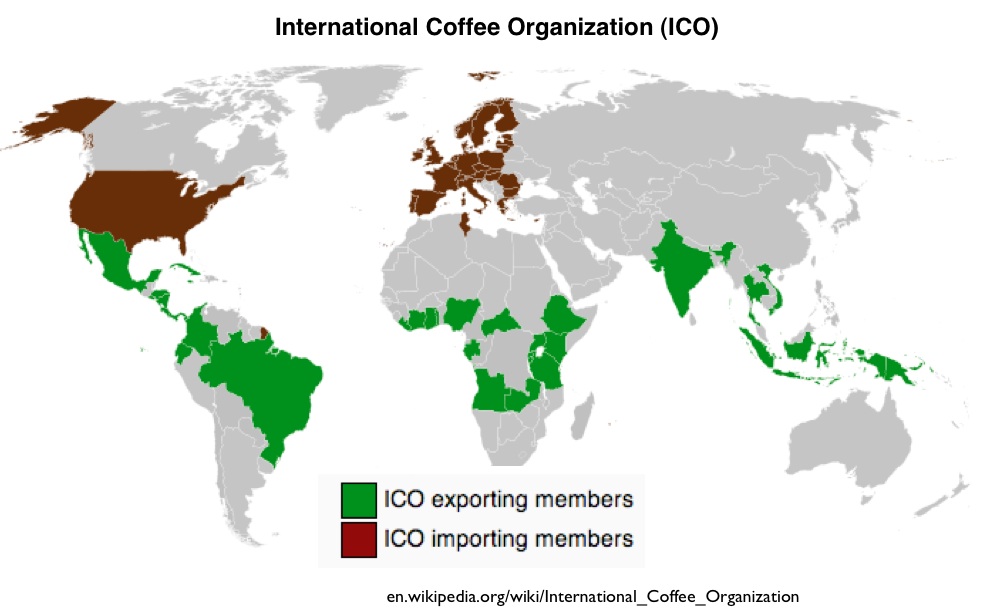Now that the cherries have been picked and all the fruit has been removed – the beans are ready to be exported. Several factors meet at a focal point when understanding this phase of the coffee commodity chain, including – quantity, shipment, currency, destination, stocks, hedging, trigger signals, and the list goes on. (“International Coffee Organization”)
Coffee is primarily traded in 60-kg bags in its “green” form. In 2010, nearly 93.4 million bags of green coffee was exported from 70 coffee producing countries. For some of these countries, coffee exports are their largest contribution to GDP. Today, the international coffee trade is worth roughly $15 billion, second only to fossil fuels. Roughly 97% of all exported coffee is done so through ICO exporting members, which can be seen on the ICO import/export map. The largest exporters are Brazil, Vietnam, Colombia, Indonesia, India, Ethiopia, Honduras, Peru, Guatemala, and Mexico. (“International Coffee Organization”)
With so few exporters who aren’t associated with the ICO (International Coffee Organization), small farmers are pressured to lower their prices to that which is meets the requirements of their profit margins. This leads to a conglomeration of large companies who can control much of the coffee market. Kraft, Nestle, Proctor & Gamble, Sara Lee, and Tchibo control half of the global retail coffee market. Coffee is rarely purchased by the final retailer, but rather middlemen who plan on selling the beans to retailers for additional profit. (“COFFEE’S HIDDEN KICK”)

